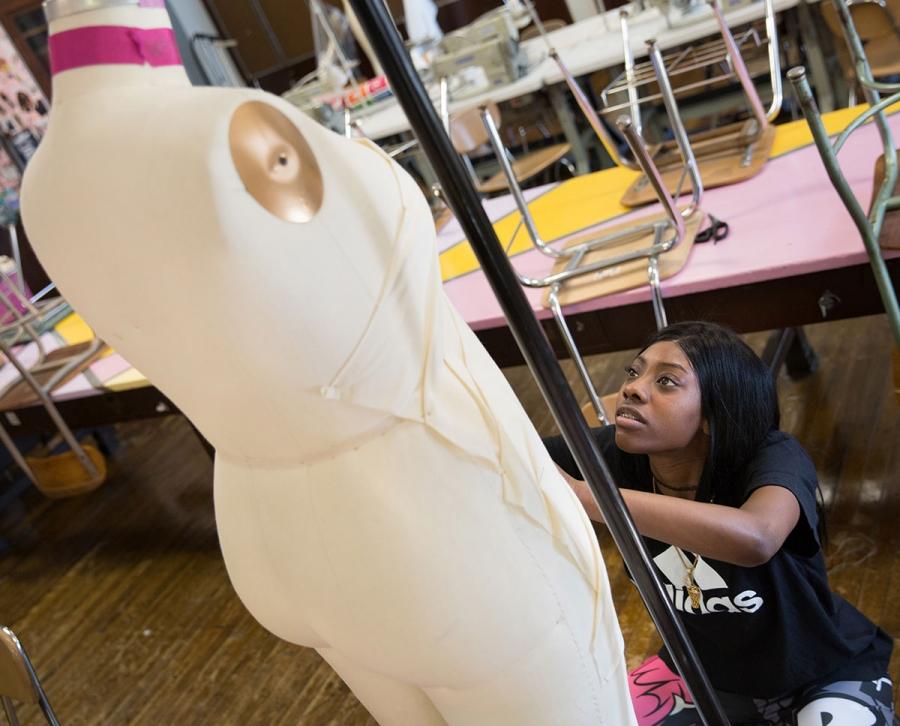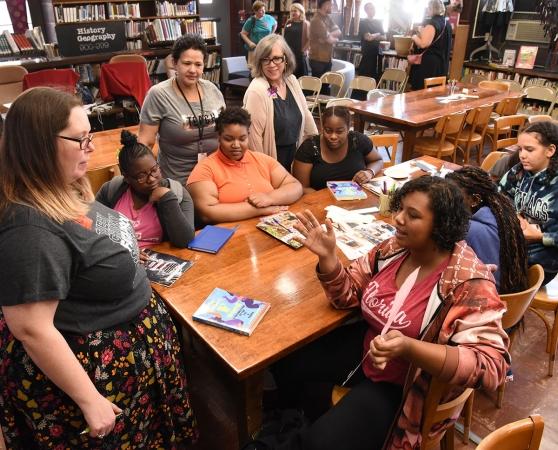The students in the Curvy Lab at the HS of Fashion Industries in Manhattan have designing dreams — but their dreams feature everyday women, like many of them.
“I remember last year we made items I couldn’t wear because they were size 6,” said Danah, a junior. “The Curvy Lab is a great opportunity. I wouldn’t have to go to every store looking for my size.”
Sixteen-year-old Iasia was similarly inspired: “I chose this class because I have a curvier figure and I wanted to learn to dress people of my size,” she said.
Curvy Lab, which began in January 2018 as a pilot project, is now fully operational. “Our mission is to bring awareness to women that style is inclusive, not exclusive, and to dispel the idea of the unattainable standard of beauty — to see beauty in everything and design for anyone,” said teacher Rosa Chavez, one of the program’s founders.
The Curvy Lab helps aspiring student designers understand the curvier shape — what some people might call “plus size.” But Chavez says that appellation is misleading. “We have to educate people,” she says. “Size 16 is not a plus size. It’s average.”
That’s a myth-busting fact for young people used to seeing only slender models in runway shows and fashion magazines.
More than 90 percent of the students at Fashion Industries are women, notes Chavez, who is also a graduate of the school. “Many women, because they don’t fit in a dress, think something is wrong with them,” she says. The Curvy Lab promotes body positivity and self-love for young women who often feel left behind in the world of fashion.
Chapter Leader Derek Stampone says the lab is generating a buzz.
“The students who are fashion design majors have talked about the opportunity to have a choice in their junior year to express body positivity,” says Stampone.
Chavez teaches the lab’s introduction to draping class for juniors, who learn to design on dress forms that come in a variety of sizes. During a recent class, students pinned muslin to dress forms to understand how it would fit and drape on a larger figure.
The rigor of learning a craft is evident in the students’ intense focus: One class assignment is the painstaking task of identifying a fabric’s grain — the direction of the thread — that will help students drape the fabric to best effect on the dress form. It can be tedious, but it’s also necessary, says Chavez. “I try to instill in them that every craft has that slow process to get to the finish line,” she says. “Fabric is key to fit, especially for women of size, because fabrics can ride up.”
In searching for written content on the topic, Chavez came across a book of essays called “The (Other) F Word: A Celebration of the Fat & Fierce,” edited by Angie Manfredi. Judith Dahill, the school librarian, helped arrange for Manfredi to visit the school on Sept. 24. “The book is about people with fuller figures, and what it’s like to be in that skin,” says Chavez.
“Women of all sizes should be appreciated,” says Dahill. “Students loved the book.”
Manfredi’s visit resonated with many of the students. Danah said Manfredi was “very relatable, especially the experiences she had that I had, the hurtful things that are said.”
The idea for the Curvy Lab began with Angela O’Riley, a fashion consultant for plus sizes who often collaborates with Chavez and the school. Her shape has given form to full-figured designs that are sold under famous labels, such as Michael Kors and Jones New York, and the large-size body forms in the classroom are based on her shape.
O’Riley leads classroom discussions on size inclusivity in the fashion industry and other topics, including the judicious use of social media such as Instagram to share images.
During the draping class, O’Riley watched the students pin muslin to the larger dress form. Knowing how to dress the full–figured woman, she says, will be an advantage for new designers.
It shouldn’t be “a one-time thing,” said O’Riley. “Curvy Lab should exist in all fashion schools.”

